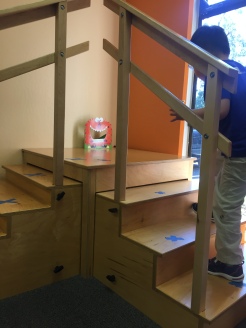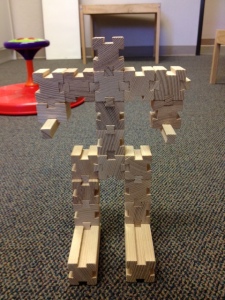
Blog Hop and Summer Toy Give-away! (see below for details)
HERE’S HOW IT WORKS:
Step One: Use the Rafflecopter entry form at the end of this post to enter to win a $50 Amazon gift card to purchase a favorite summer toy!
Step Two: Visit each of the blogs below and COMMENT on their post about their favorite summer toy or activity. Have you tried it? Will you buy it? Would your kiddos love it? How would you use it?
Step Three: Earn additional entries by “Liking” each blog’s Facebook page, straight from the Rafflecopter form!
***Remember: You will only be entering the Rafflecopter ONCE, ON THIS PAGE, not on every blog in the hop. The contest is open to anyone. Winner will be chosen at random via Rafflecopter and will be notified by email once entries have been verified (comments on each blog, Facebook likes on each blog).
NO PURCHASE NECESSARY. VOID WHERE PROHIBITED BY LAW. Open worldwide to those 18 years and older. Please read FULL RULES BEFORE ENTERING, available in the Rafflecopter widget below. Giveaway closes June 6 at 12:00am
a Rafflecopter giveaway
The Inspired Treehouse – OT Cafe – Golden Reflections Blog – Pink Oatmeal – Therapy Fun Zone – Your Therapy Source – Mama OT – Starfish Therapies – Playing With Words 365 – Playapy
___________________________________________________________________________________________
Hula hoops are a great summer time (or anytime) toy. Now don’t automatically assume it means you need to know how to ‘hula hoop’ in order to play with them. I’ll be the first to admit that I’m terrible at ‘hula hooping’ however there are a ton of other ways to have fun with them.

Movement Through Space – If you get a few hula hoops you can line them up in a row and you can practice locomotor skills through them. Start simple by having kids walk through each one. Next can be running through them. Add in some jumping and hopping as well. To get more complicated you can create movement patterns similar to hopscotch where they have to jump in one then hop in the next one or skip hoops as they run through them. You can also do side stepping and leaping. I like this activity because it works on movement through space with the child being aware of their path. They also have to coordinate their movements while remembering a pattern/instructions. If you have enough hoops and kids, you can even make it into a relay race!
Visual Motor – Hula Hoops also make great targets. You can set them on the ground and use it as a visual for bouncing a ball in. This could be done by yourself with dribbling skills, or using a tennis ball to practice bouncing and catching. It can also be used with a partner for bounce passes and having to bounce the ball in the hoop before your partner gets it and bounces it back. You can keep score for how many times you each get it in the hoop! Also, you can use it as a throwing target. If you have a tree you can hang it from a branch and practice throwing balls through it or being really tricky and getting a frisbee through it (my frisbee skills are about as advanced as my hula hoop skills)! If you don’t have a tree you could prop it up against a support or leave it flat on the ground and try to throw or toss an object into or through it. If you are leaving it on the ground you could use chalk and add rings inside of it and try to toss bean bags in. Each chalk circle could have a set number of points and you could see how many points you get (similar to darts or ski ball).
Body Awareness – Some other fun ideas to use a hula hoop for are as a jump rope and as an actual hula hoop. For jump roping (yes, even adults can still do it – I tried it today) you hold onto one edge of the hula hoop and swing rotate it so it swings over your head and then you jump through as it comes back down to your feet. Similar to a jump rope you have to be aware of where your body is as well as rhythm and coordination but with the hula hoop its a closed loop so you have to know where your head is as well as your feet. For actual hula hooping (is that even a word?) you can do the traditional version around your waist/hips but you can also experiment with other body parts such as arms, legs and even your neck. It allows kids to know where the parts of their body are and focus on how they are moving and controlling that one area such that it is isolated to get the movement they want. What’s great about the hula hoop is they are getting immediate feedback.
Some other fun ideas:
- Team work activities where you have two or more people in the hula hoop and they have to move across space together (similar to a three legged race). You can make the trek as complicated or simple as you want. To add to the difficulty level you can blindfold all but one of the people so they really have to work as a team.
- Hula hoop rolling. You can place the hula hoop on its edge and see how far you can roll it, or who can roll it the furthest. You can also draw chalk lines and try to keep it rolling on the line for as long as possible.
- Extra large ring toss is always fun. If you have stumps or other outdoor items that work well as a post you can try to use the hula hoop as a ring to get around it.
What are some of your favorite activities with a hula hoop?
Check out some other favorite summer time toys from these terrific bloggers and enter the rafflecopter drawing for a chance to win!
The Inspired Treehouse – OT Cafe – Golden Reflections Blog – Pink Oatmeal – Therapy Fun Zone – Your Therapy Source – Mama OT – Playing With Words 365 – Playapy
a Rafflecopter giveaway
















